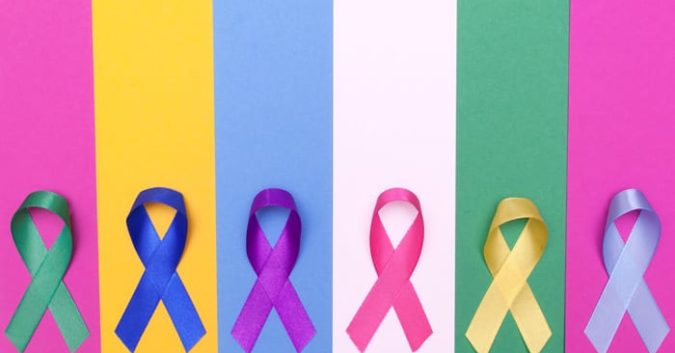In 2018, there were 17 million new cancer cases across the globe. That number is expected to reach 27.5 million per year by 2040.
The increase is in part because the global population is growing larger and older. But there are many other factors that cause cancer, not all of which are fully understood. Americans, who suffer the 7th highest overall cancer rate in the world, continue to be exposed to environmental dangers that can be prevented – and this is what inspired National Cancer Prevention Month.
What Is National Cancer Prevention Month?
Each February, kicked off by World Cancer Day and National Cancer Prevention Month, represents an effort to promote global cancer prevention by raising national awareness. The message: More than 40 percent of cancers and half of all cancer deaths in the U.S. can be attributed to preventable causes.
By quitting smoking, maintaining a healthy weight, protecting your skin from the sun, and getting screened for cancer, among other steps, you can “dramatically reduce your risk of certain cancers,” says the American Association for Cancer Research (AACR), 1 organization that works to raise funds and awareness for cancer prevention. The problem, however, is lack of awareness about how certain cancers are caused.
In the U.S., we’ve made great strides to reduce cancer deaths through policymaking and public education on common cancer risks. Take tobacco, for example: Key initiatives like smoke-free laws and hard-hitting mass media campaigns lowered smoking rates more than twofold from 1965 to 2017.
Indeed, the government’s 2018 Annual Report to the Nation on the Status of Cancer showed cancer deaths dropped by 1.8 percent for men and 1.5 percent for women between 1999 and 2015, with lung cancer seeing the greatest decline in mortality. Researchers attribute this improvement to a decrease in use of tobacco.
But lung cancer remains by far the leading cause of cancer-related deaths for both men and women. Why? Smoking isn’t the only cause. Where we’re lacking key initiatives is around rarer causes of lung cancer.
This Year, Let’s Focus on Rare Preventable Diseases
To achieve widespread public focus on the prevention of cancer, we each need to understand all the risks involved. They start with unhealthy lifestyle choices, like smoking, drinking, unsafe sex, and excessive sun exposure. But what about the risks nobody talks about?
Besides natural causes like age, genetic mutation, and other chronic health conditions, the Mayo Clinic lists an important risk factor we can and should protect ourselves from: the environment. And not just in terms of avoiding secondhand cigarette smoke. All around us, in the air, and built into our homes, workplaces, and schools, are toxic chemicals that threaten our health – the most notable of which today is asbestos.
This National Cancer Prevention Month comes amid state petitions to the Environmental Protection Agency (EPA) for more reporting around uses and imports of the toxic mineral, which contributes to almost 40,000 American deaths but still enters the country in droves. The U.S. not only remains 1 of the only developed countries to neglect banning asbestos, but also makes little effort to regulate it, putting Americans at increased risk of rare, asbestos-caused cancers like mesothelioma.
Of course, it’s up to the EPA to put policies in place that better protect our environment and people. But in the meantime, we can use this month – including Rare Disease Day, coming up on the 28th – as an important opportunity to speak out against the government’s poor regulation of cancer-causing substances.
Just sharing your thoughts on social media (use the hashtags #WeCanICan and #WorldCancerDay) can help raise awareness. But remember: it’ll take much more than a day or even a month to stop cancer before it starts. As the only cure to asbestos exposure, in particular, prevention should be in our thoughts always.
